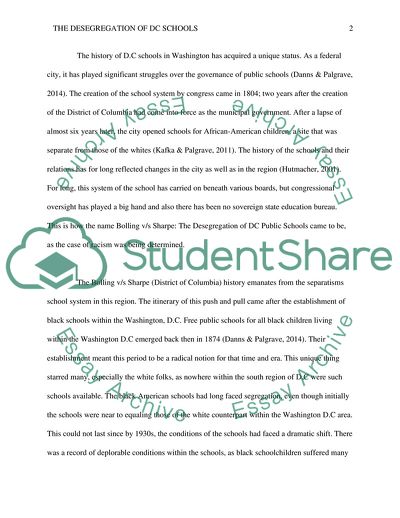Cite this document
(The Desegregation of DC Public Schools Report Example | Topics and Well Written Essays - 2500 words, n.d.)
The Desegregation of DC Public Schools Report Example | Topics and Well Written Essays - 2500 words. https://studentshare.org/history/1825835-bolling-vs-sharpe-the-desegregation-of-dc-public-schools
The Desegregation of DC Public Schools Report Example | Topics and Well Written Essays - 2500 words. https://studentshare.org/history/1825835-bolling-vs-sharpe-the-desegregation-of-dc-public-schools
(The Desegregation of DC Public Schools Report Example | Topics and Well Written Essays - 2500 Words)
The Desegregation of DC Public Schools Report Example | Topics and Well Written Essays - 2500 Words. https://studentshare.org/history/1825835-bolling-vs-sharpe-the-desegregation-of-dc-public-schools.
The Desegregation of DC Public Schools Report Example | Topics and Well Written Essays - 2500 Words. https://studentshare.org/history/1825835-bolling-vs-sharpe-the-desegregation-of-dc-public-schools.
“The Desegregation of DC Public Schools Report Example | Topics and Well Written Essays - 2500 Words”. https://studentshare.org/history/1825835-bolling-vs-sharpe-the-desegregation-of-dc-public-schools.


